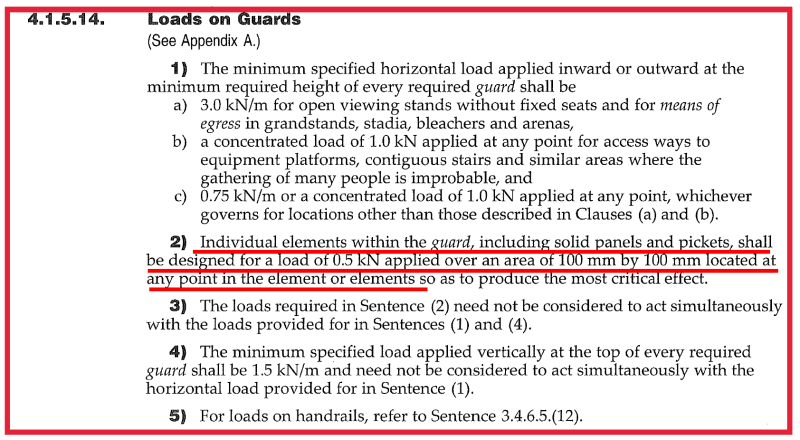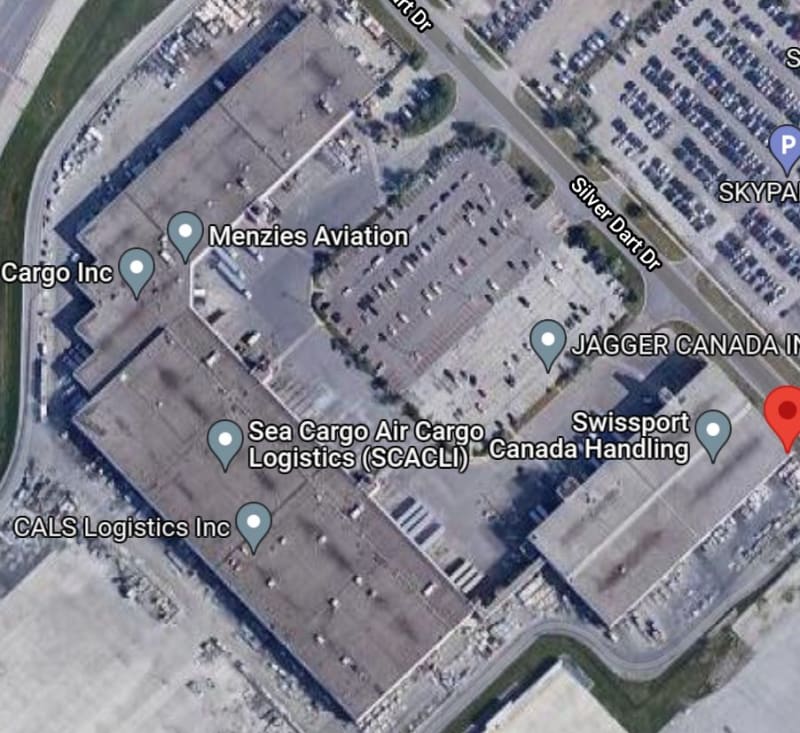phamENG
Structural
- Feb 6, 2015
- 7,623
Working on some shop drawing calcs for a fabricator client, and I've run into an issue that I want to take a closer look at. IBC 2015.
Everything I've done with this fabricator to date has been steel, but this is an aluminum project and includes guard rails - both for elevated platforms and stair rail systems (combined 42" guard with hand rail set at 36" above treads and connected to verticals on the guard). Unfortunately, it was bid and detailed like a steel system with 1-1/2 pipe at 4' on center...not even close to working. Before I go back and tell him he has to double his material, I need to sharpen my pencil a little. The architect classified this building as U, so I don't get to take advantage of the 20plf allowed for I-3, F, H, and S. 50plf and 200lbf point load.
When we apply live loads to a sloped surface (roof, ramp, stair, etc.), we apply it to the projected surface. So if you have a 100psf stair live load and a 3' wide stair with a 8' rise and 12'10" run, total live load would be 3'x12.8333'x100psf=3850lbf even though the actual sloped surface is about 15'2". The idea being that people or material occupy the vertical space above the surface and not the space perpendicular to it. Has anyone applied this concept to stair rails? So on that same stair, your rail has a run of 15'2", but the equivalent occupancy is only 12'10". In other words, you can't have enough people on the stair to apply the 50plf contemplated by a horizontal rail. So the rail would be designed for a load of about 42plf rather than the full 50.
Best bet is probably to just stick to the 50plf along the rake, but I'm curious to see if people are doing something different elsewhere.
Everything I've done with this fabricator to date has been steel, but this is an aluminum project and includes guard rails - both for elevated platforms and stair rail systems (combined 42" guard with hand rail set at 36" above treads and connected to verticals on the guard). Unfortunately, it was bid and detailed like a steel system with 1-1/2 pipe at 4' on center...not even close to working. Before I go back and tell him he has to double his material, I need to sharpen my pencil a little. The architect classified this building as U, so I don't get to take advantage of the 20plf allowed for I-3, F, H, and S. 50plf and 200lbf point load.
When we apply live loads to a sloped surface (roof, ramp, stair, etc.), we apply it to the projected surface. So if you have a 100psf stair live load and a 3' wide stair with a 8' rise and 12'10" run, total live load would be 3'x12.8333'x100psf=3850lbf even though the actual sloped surface is about 15'2". The idea being that people or material occupy the vertical space above the surface and not the space perpendicular to it. Has anyone applied this concept to stair rails? So on that same stair, your rail has a run of 15'2", but the equivalent occupancy is only 12'10". In other words, you can't have enough people on the stair to apply the 50plf contemplated by a horizontal rail. So the rail would be designed for a load of about 42plf rather than the full 50.
Best bet is probably to just stick to the 50plf along the rake, but I'm curious to see if people are doing something different elsewhere.


